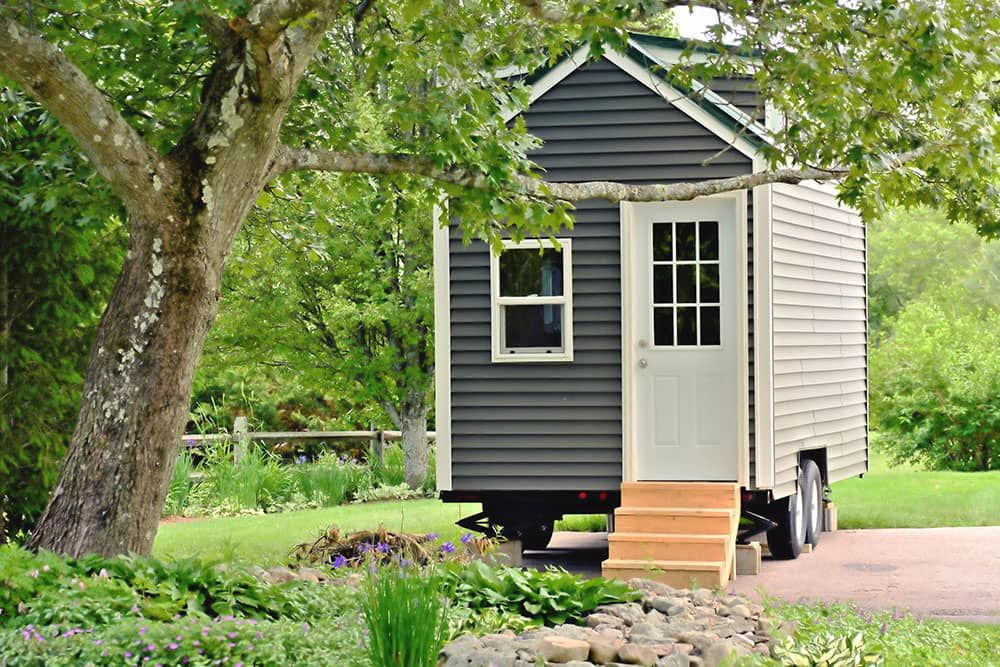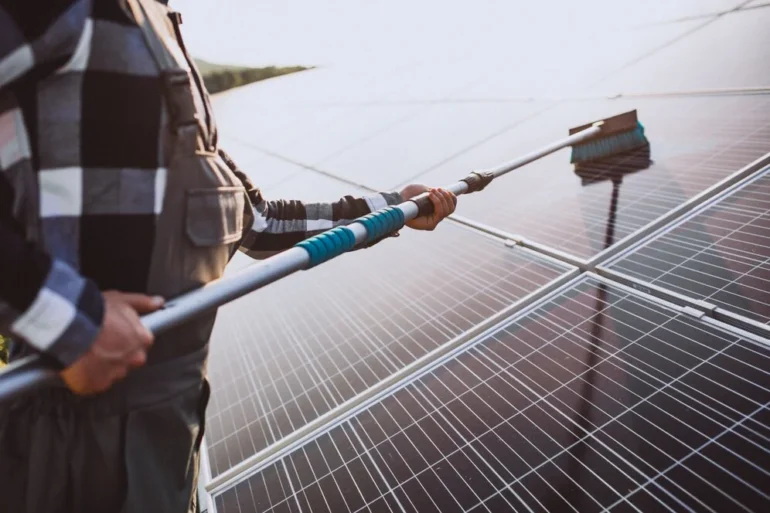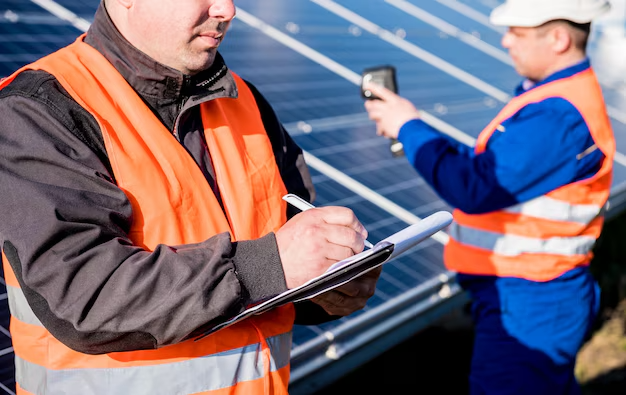Solar for Tiny Homes: Australian homes have always been some of the biggest in the world, even dominating surveys, including in 2017. In the latest CommSec report, houses in the country averaged 235.8 square metres in 2019/2020, almost three per cent larger than the previous record. But there seems to be a trend going against huge houses known as the tiny house movement where dwellings are about 37 square metres or even smaller.
Living tiny offers big benefits. Yes, the space is limited, and you will mostly just have your essentials. However, you are free to turn it into a place that no landlord controls. You do not have to worry about rent prices. Plus, your carbon footprint will be greatly reduced. When you check your electric bills, they are less than what you used to pay, mainly if you use solar to power your home.
Components of Your Solar System
If you’re contemplating going solar, we highly suggest that you read this blog post to understand more about solar power production. From there, you will learn that solar systems are made up of two components:
- Panels: When people think about solar systems, they usually visualise solar panels on rooftops. But these panels are not the only things you need. They do have a significant job, however. These panels are formally known as photovoltaic modules, which collect solar energy. You can have several panels depending on the size of your home and requirements.
- Inverter: Solar panels cannot work alone because they only generate DC power. You need to use an inverter to convert the sun’s energy to usable energy, specifically from DC to AC. Alternating Current or AC is the electricity that homes, appliances, and businesses use to run.
There is actually a third component: batteries. Traditionally, you do not need to buy a battery for a solar system since it can function properly with just panels and an inverter. However, if you need to store excess energy so you can use it later, a battery is a nice add-on to have.
Should You Use a Battery?
Many have suggested skipping the inverter and use batteries instead, which are the most expensive parts of the system for tiny houses. The problem with eliminating the inverter is that you will have to use 12-volt appliances only. As mentioned, panels have Direct Current or DC power, so the standard plug size and 230-volt AC outlet will not work. You will have to use a 12-volt system, which requires that you replace your current appliances. Obviously, that means higher costs and a difficult system to upgrade.

Solar System Considerations for Your Tiny Home
When selecting the right solar PV system for your tiny home, there are a few things that you need to establish first. We’ll answer the three most common questions below:
- How big or small should my solar system be?A typical misconception with solar systems for tiny homes is that these smaller dwellings do not need much. But it does not work that way. The size of the system depends on significant factors, including the amount of electricity you normally use. You need to calculate the amount or at least have an approximate figure for it.Ask yourself other questions relating to this subject. For instance:
- Are you willing to downsize your appliances, such as your refrigerator?
- Can you let go of your coffeemaker and other machines like your electric stove or oven?
- Can you go without air conditioning and heating or at least limit usage?
It may sound complicated, but an excellent way to know your consumption is to look at your latest bill.
- Where Should You Install the Panels?Panel placement with traditional homes is not difficult at all. When you hire EasySolar, we will make sure the panels face the best direction based on factors, such as your location, solar production, and roof angle.On the other hand, tiny homes are different. The good news is that you have more options than you think. The panels can be:
- Installed on the ground: A common choice known as the ground-mounted system allows tiny homes to have as many panels as they want. They are installed wherever you have available space, particularly where they can be most efficient. Maintenance is also easier because you can simply remove snow or debris off without needing to go up the roof.
- On the roof: Just like with traditional homes, you can also install panels on your roof. It’s the classic method but usually just fits two to three panels. If you have low electricity needs or you’re merely supplementing your current power source, this option may be for you.
- On the road: Of course, it doesn’t mean you will literally place the panels on the road. When you’re going mobile, the tiny home is designed to go from one place to another. In such a case, the solar system should be secure as you transport it to the new location.
Some rules apply, which can vary depending on where you are. For example, in Western Australia, a single bedroom dwelling in which a permanent tiny house qualifies can only have a maximum size of 70 square metres. Tiny house on wheels (THOW) is still considered within a grey area when it comes to regulations. These size limitations can give you an idea of where to install the panels.
- Do you need to go off-grid?Living in a tiny home does not mean being independent of your power source. You can stay connected to the grid and still use a solar system to reduce your bills drastically. That means you will have to connect the tiny house solar system to the utility grid. You can then get some form of rebate for the extra electricity you collected and don’t use.You can also be completely independent, which is what many tiny living enthusiasts aim for. Downsizing in life implies decreasing the cost of living. One easy way to accomplish such a goal is to take the home off the grid. If it is your plan, you will need batteries and solar panels. The batteries will store electricity so that you never lose power no matter how the local grid is performing.
If you’re going tiny, more savings can be within your reach with solar power. Contact EasySolar so our friendly experts can explain more about a solar-powered tiny home. We’ve got options that will surely fit your modest lifestyle.
FAQ’s
If you’re living in a tiny home and seeking an energy-efficient and sustainable solution, solar power can be a perfect fit. Harnessing solar energy allows you to power your tiny home with clean, renewable energy. Here are some FAQs to help you understand how solar for tiny homes works and what you need to get started:
- Why is solar power a good option for tiny homes?
Solar power is an excellent option for tiny homes because it offers energy independence, reduces reliance on the grid, and helps lower your carbon footprint. It’s a sustainable and cost-effective way to meet your energy needs.
- How does solar power work for tiny homes?
Solar power systems for tiny homes consist of solar panels that convert sunlight into electricity. This electricity is then stored in batteries for use during times of low sunlight or at night. An inverter is used to convert the stored energy into usable AC power.
- What components do you need for a solar system in a tiny home?
To set up a solar system for your tiny home, you will need solar panels, a charge controller, batteries for energy storage, an inverter to convert DC to AC power, wiring, and mounting equipment. It’s important to size the system appropriately based on your energy requirements.
- How many solar panels do I need for my tiny home?
The number of solar panels needed depends on factors such as your energy consumption, available roof space, and solar potential in your area. A solar professional can help assess your energy needs and design a system that suits your requirements.
- Can I install solar panels on my tiny home’s roof?
Yes, solar panels can be installed on the roof of your tiny home, provided it has sufficient space and proper orientation for optimal sunlight exposure. In cases where the roof space is limited, ground-mounted or portable solar options can be considered.
- How do I store excess solar energy in a tiny home?
Excess solar energy generated during the day can be stored in batteries for later use. Solar batteries allow you to have a backup power supply or utilize the stored energy during the night or when the sun isn’t shining.
- Can solar power meet all the energy needs of a tiny home?
Yes, a properly sized and designed solar power system can meet the energy needs of a tiny home. By considering your energy consumption patterns and implementing energy-efficient practices, you can maximize the effectiveness of your solar system.
- Are there any incentives for installing solar in tiny homes?
Incentives for solar installations vary depending on your location. Research local solar incentives, such as tax credits, rebates, or grants, that may apply to tiny homes. Consulting with solar professionals can help you navigate available incentives.
- Do I need a professional to install solar in my tiny home?
While DIY solar installations are possible, it’s recommended to consult with a solar professional, especially for complex systems. They can ensure proper installation, wiring, and system design, maximizing the efficiency and safety of your solar setup.
Solar power is a sustainable and reliable solution for powering tiny homes. By utilizing solar energy, you can reduce your reliance on traditional energy sources and enjoy the benefits of clean, renewable power. Working with solar professionals will help ensure a customized system that meets your energy needs while keeping your tiny home environmentally friendly and self-sufficient.







